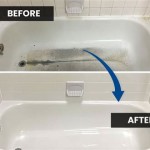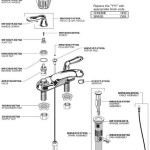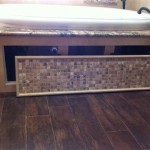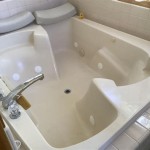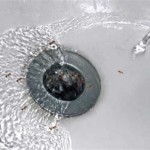Draining a Portable Bathtub: A Comprehensive Guide
Portable bathtubs offer a convenient solution for bathing in locations without traditional plumbing or for individuals with mobility limitations. However, unlike a fixed bathtub with a built-in drain, a portable bathtub requires a specific drainage process. Understanding this process is crucial for safe and efficient water disposal, preventing spills and potential water damage. The method used depends largely on the type of portable bathtub and the available drainage infrastructure. This article outlines the common methods for draining these tubs, addressing various scenarios and potential challenges.
Before initiating the drainage process, preparation is paramount. First, ensure the water has cooled to a safe temperature. Extremely hot water can damage drainage systems and pose a scalding risk. Secondly, gather the necessary equipment, which may include a drainage hose (often supplied with the tub), buckets, towels, and potentially a small pump, depending on the distance and elevation of the drain point. A clear understanding of the bathtub's specific drainage mechanism is essential, usually detailed in the product manual. Familiarizing oneself with these instructions will prevent errors and ensure a smooth drainage procedure.
Understanding Portable Bathtub Drainage Systems
Portable bathtubs generally employ one of two primary drainage systems: gravity-fed drainage and pump-assisted drainage. Gravity-fed systems rely on the natural downward flow of water through a hose connected to a drain plug near the bottom of the tub. These systems are simple to operate but require the drain point to be lower than the bathtub itself. The effectiveness of gravity-fed drainage hinges on a sufficient elevation difference; otherwise, drainage will be slow or incomplete. Pump-assisted drainage, on the other hand, utilizes a small electric pump to actively push the water out of the tub and through a hose. This method is particularly useful when the drain point is at the same level as or even higher than the bathtub, overcoming the limitations of gravity-fed systems. Pump-assisted drainage offers greater flexibility in drain placement but requires a power source and the pump's functionality should be verified before each use.
The design of the drain plug itself can vary. Some portable bathtubs use a simple rubber stopper that is manually removed to initiate drainage. Others incorporate a more sophisticated valve system that can be opened and closed to control the water flow. Regardless of the design, it's important to ensure the drain plug is properly sealed before filling the tub to prevent leaks during use. Regular inspection of the drain plug and its surrounding area for any signs of wear or damage is also recommended to maintain its effectiveness. Replacing a worn or damaged drain plug is a simple preventative measure that can avoid potential water damage.
The drainage hose is another critical component. It should be durable, flexible, and of the correct length to reach the intended drain point without excessive stretching or kinking. A hose that is too short will obviously be unusable, while a hose that is too long can be cumbersome and prone to tangling. Regularly inspect the hose for cracks, punctures, or other signs of damage, and replace it as needed. Ensure the hose is securely connected to both the bathtub drain and the drain point to prevent leaks during drainage. Using hose clamps or similar securing devices can provide added security, especially when using a pump-assisted system where water is being actively forced through the hose.
Draining Using Gravity-Fed System
To drain a portable bathtub using gravity, the first step is to position the drainage hose. Attach one end securely to the drain plug outlet on the bathtub. Placement of the other end is crucial; it must be positioned lower than the bathtub's drain to allow for effective gravity drainage. Common drain points include a nearby sink, toilet, floor drain, or even an outdoor area, provided local regulations permit such discharge. Prior to releasing the drain plug, ensure the hose is securely positioned within the drain point to prevent accidental displacement and potential spills. Securing the hose with tape or weights can provide added stability.
Once the hose is properly positioned, carefully remove the drain plug or open the drain valve. The water will then begin to flow through the hose and into the drain point. Monitor the flow to ensure it is consistent and that there are no leaks or obstructions in the hose. If the flow is slow or stops entirely, check for kinks or blockages in the hose. Lifting the hose slightly can sometimes dislodge any trapped air or debris. If the problem persists, disconnect the hose and inspect it thoroughly for obstructions. A garden hose nozzle can be used to flush out any debris.
As the water level decreases, the flow rate may also decrease due to reduced water pressure. In some cases, manually tilting the bathtub slightly towards the drain side can help to remove the remaining water. This is particularly useful for bathtubs with a shallow slope towards the drain. However, exercise caution when tilting a bathtub filled with water, as it can be heavy and unstable. Ensure a firm grip and adequate support to prevent accidents. Once the bathtub is completely drained, disconnect the hose and clean both the bathtub and the hose thoroughly. Allow them to air dry before storing to prevent mildew growth.
Draining Using a Pump-Assisted System
When gravity drainage is not feasible, a pump-assisted system offers a more flexible solution. This method utilizes a small electric pump to actively push the water through the drainage hose, even when the drain point is at the same level or higher than the bathtub. Before using the pump, ensure it is compatible with the bathtub and that it is in good working condition. Check the power cord for any damage and verify that the pump is properly plugged in. Submerge the pump in the water at the bottom of the bathtub, ensuring it is positioned securely. Some pumps have suction cups or other mechanisms to prevent them from tipping over.
Next, attach the drainage hose to the pump's outlet. Ensure the connection is secure and leak-proof. Position the other end of the hose at the desired drain point, as with gravity drainage. Once everything is connected, turn on the pump. The water will then begin to flow through the hose and into the drain. Monitor the pump's performance and the water flow. If the pump is struggling or the flow is weak, check for obstructions in the hose or the pump's intake. Some pumps have a filter to prevent debris from entering the impeller; clean this filter regularly to maintain optimal performance.
Continue running the pump until the bathtub is completely drained. As the water level decreases, the pump may start to suck air, which can cause it to make a gurgling noise. This is normal, but it's important to turn off the pump as soon as it starts sucking air consistently, as running it dry can damage the motor. Once the bathtub is drained, turn off the pump, disconnect the hose, and remove the pump from the bathtub. Clean both the pump and the hose thoroughly, and allow them to air dry before storing. Inspect the pump for any signs of damage, and perform any necessary maintenance according to the manufacturer's instructions.
Regardless of the drainage method used, proper hygiene is crucial. After each use, thoroughly clean the portable bathtub with a mild detergent and warm water. Rinse thoroughly and allow it to air dry completely before storing. This will help to prevent the growth of bacteria and mildew, ensuring a clean and sanitary bathing environment. Regularly inspect the bathtub for any signs of damage, such as cracks or leaks, and repair them promptly to prevent further problems. By following these guidelines, one can ensure the safe and efficient operation of portable bathtubs.

Perfect Ideas From For Those With No Bathtub Who Urgently Need To Relax Bright Side

Homefilos Collapsible Portable Bathtub Japanese Soaking Tub For Shower Inflatable Size Foldable Ofuro Com

Homefilos Collapsible Portable Bathtub Japanese Soaking Tub For Shower Inflatable Size Foldable Ofuro Com

Bathtubs Tiktok

5 Easy Ways To Unclog Bathtub Drain

Simple Project 56 In X 24 Collapsible Soaking Bathtub With Right Drain Blue Portable Shower Bath For S Al Pbt 1 The Home Depot

3 Ways To Block A Bathtub Drain Without Plug Ricks Plumbing

Ez Bathe Inflatable Bath Tubs Portable Bathtub For S

Portable Bathtub Freestanding Baby Bath Inart Modern Foldable With Drain Hose And Cover

Large Eco Friendly Portable Bathtub Foldable Soaking Tub For S Outdoor Use With Thermal Foam And Accessories Kit Com



